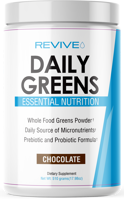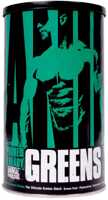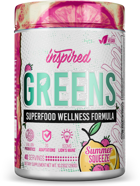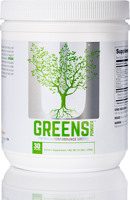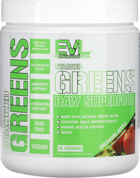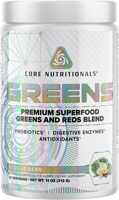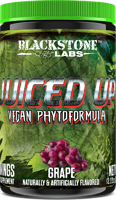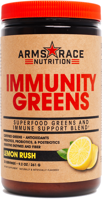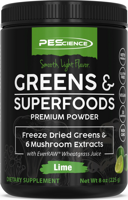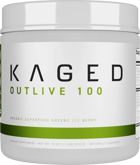Greens Powder News on PricePlow
-
Apr 23, 2024 ![]()
Product News
DAS Labs Bucked up Organic Greens has new variations: Category: Greens Powder -
Apr 23, 2024 ![]()
Product News
EVLution Nutrition Stacked Greens Energy was created.
Categories: Energy & Endurance, Greens Powder -
Apr 22, 2024 ![]()
Product News
GHOST Greens has new variations: Category: Greens Powder -
Apr 22, 2024 ![]()
Blog Post
Ghost Greens Matcha Latte to Celebrate Earth Day 2024
GHOST is celebrating Earth Day of 2024 by releasing a new flavor of their GREENS in Matcha Latte! -
Apr 04, 2024 ![]()
Product News
Rule 1 Fruits & Green was created.
Category: Greens Powder -
Apr 02, 2024 ![]()
YouTube Video
JOCKO WILLINK: Starting Jocko Fuel and Jocko's Supplement Stack | PricePlow 132 -
Apr 02, 2024 ![]()
Blog Post
JOCKO WILLINK | PricePlow Episode #132
Jocko Willink joins PricePlow for Episode 132 to talk about founding Jocko Fuel, doing the right thing, and Jocko's entire stack from start to finish -
Mar 29, 2024 ![]()
Product News
Inno Supps Reds & Greens, Full Spectrum has new variations: Categories: Greens Powder, Superfoods -
Mar 27, 2024 ![]()
Product News
Inno Supps Reds & Greens, Full Spectrum was created.
Categories: Greens Powder, Superfoods -
Mar 26, 2024 ![]()
Product News
MTN OPS Greens was created.
Category: Greens Powder -
Mar 23, 2024 ![]()
Product News
PLNT Organic BioGreens was created.
Category: Greens Powder -
Mar 13, 2024 ![]()
Product News
Bare Performance Nutrition Strong Greens has new variations: Category: Greens Powder -
Mar 09, 2024 ![]()
Product News
TruBrain Daily Greens was created.
Categories: Greens Powder, Superfoods -
Feb 22, 2024 ![]()
Product News
BEAM super greens has new variations: Category: Greens Powder -
Feb 17, 2024 ![]()
Product News
Vital Proteins Daily Greens has new variations: Category: Greens Powder -
Feb 16, 2024 ![]()
Blog Post
Revive MD Subscription Box: Greens, Vitamin Packs, and More!
Revive MD just released their new Subscription Box, a monthly health kit comprising of Daily Greens, Essential Vitamins Pack, a frother, and a glass bottle. -
Feb 14, 2024 ![]()
Blog Post
GHOST Pink Lemonade Flavor Lineup: Greens, Pump, and Size
GHOST is releasing a pink lemonade flavor for three of their supplements in Greens, Pump, and Size. We got to try this flavor in Summer 2023, and it was great! -
Feb 14, 2024 ![]()
Product News
Alani Nu Super Greens has new variations: Category: Greens Powder -
Feb 10, 2024 ![]()
Product News
Magnum Nutraceuticals NEKTR has new variations: Categories: Greens Powder, Superfoods -
Feb 09, 2024 ![]()
Product News
Magnum Nutraceuticals NEKTR was created.
Categories: Greens Powder, Superfoods -
Feb 09, 2024 ![]()
Product News
Cutler Nutrition Recovery Greens was created.
Category: Greens Powder -
Feb 01, 2024 ![]()
Blog Post
Kaged Kickstarts 2024 in The Vitamin Shoppe’s Fit Lifestyle
After a monumental year for Kaged's new era, they don't show any signs of slowing down. Their next step is promoting products beneficial for a Fit Lifestyle. -
Jan 31, 2024 ![]()
Product News
MRM Global Greens was created.
Category: Greens Powder -
Jan 30, 2024 ![]()
Blog Post
Animal Pill Packs – The Full Arsenal of “Paks” Explained
Animal has a wide variety of pill pack supplements tailored to any person's possible needs, whether it's general health, joint care, women's health, or others. -
Jan 28, 2024 ![]()
TikTok Video
@Infinis Nutrition packs a lot into ULTRA GREENS. Heres why we like PeakO2, a mushroom blend for... -
Jan 17, 2024 ![]()
Blog Post
2023 Supplement Industry Awards | Episode #121
The 2023 Supplement Industry Awards on PricePlow: See Brand of the Year, Innovator of the Year, MVP of the Year, Breakout Brand, and Brand to Watch! -
Jan 15, 2024 ![]()
Product News
Ryse Supps Loaded Greens has new variations: Category: Greens Powder -
Jan 13, 2024 ![]()
Product News
EndurElite Plant Elite was created.
Category: Greens Powder -
Jan 11, 2024 ![]()
Product News
Nutricost Organic Greens was created.
Category: Greens Powder -
Jan 11, 2024 ![]()
Product News
Nutricost Spinach was created.
Category: Greens Powder -
Jan 09, 2024 ![]()
Product News
Nutricost Organic Spinach was created.
Category: Greens Powder -
Jan 08, 2024 ![]()
Blog Post
Exploring Ergothioneine as a Skin Care Ingredient
L-ergothioneine is a premiere immunity-boosting antioxidant, but it's also a skin care ingredient, outperforming vitamin E and CoQ10! -
Dec 28, 2023 ![]()
Product News
Swanson Fruit & Vegetable Blend was created.
Category: Greens Powder -
Dec 28, 2023 ![]()
Product News
NuEthix Gourmet Greens was created.
Category: Greens Powder -
Dec 27, 2023 ![]()
Product News
FNX Rebalance has new variations: Category: Greens Powder -
Dec 27, 2023 ![]()
Product News
Motiv8 Greens was created.
Category: Greens Powder -
Dec 26, 2023 ![]()
Product News
FNX Rebalance was created.
Category: Greens Powder -
Dec 21, 2023 ![]()
YouTube Video
The First Immunity Blend with MitoGreens! Infinis Ultra Greens -
Dec 19, 2023 ![]()
TikTok Video
@Infinis Nutrition brings MITOGREENS to their ULTRA GREENS -
Dec 17, 2023 ![]()
Product News
Flow Supps Greens was created.
Category: Greens Powder -
Dec 13, 2023 ![]()
YouTube Video
Most LOADED Greens Powder EVER? Infinis Ultra Greens -
Dec 13, 2023 ![]()
Blog Post
CORE Nutritionals 12 Days of Crushmas Arrives for 2023
CORE Nutritionals has begun their annual 12 Days of Crushmas promotion, and they’ve kicked it off with a "Home Alone" theme! See daily deals here! -
Dec 12, 2023 ![]()
TikTok Video
Is this the best tasting greens on the market? -
Dec 12, 2023 ![]()
TikTok Video
Infinis Ultra Greens: Level Infinity Immunity Support and Micronutrients -
Dec 11, 2023 ![]()
Blog Post
Infinis Ultra Greens: Level Infinity Immunity Support and Micronutrients
Infinis Ultra Greens is a MASSIVELY loaded greens formula with five complexes and 15 trademarked ingredients, with a huge focus on immunity -
Nov 30, 2023 ![]()
YouTube Video
Greens + Caffeine. What More Could You Ask For? (Glaxon Super Greens Energy) -
Nov 30, 2023 ![]()
TikTok Video
Glaxon Super Greens Energy! Get an added boost from your greens with 90mg of added PurCaf... -
Nov 24, 2023 ![]()
Product News
BEAM super greens has new variations: Category: Greens Powder -
Nov 24, 2023 ![]()
Blog Post
INFINIS Has Entered the Chat: Reach Your Infinite Potential
INFINIS Nutrition is Incoming: Prepare Reach Your Infinite Potential on Black Friday 2023. -
Nov 22, 2023 ![]()
Product News
DAS Labs Babe Organic Greens has new variations: Category: Greens Powder -
Nov 21, 2023 ![]()
YouTube Video
IMMUSE: Immune-Boosting Ingredient in Glaxon Super Greens -
Nov 17, 2023 ![]()
Product News
Infinis Ultra Greens was created.
Category: Greens Powder -
Nov 16, 2023 ![]()
YouTube Video
Kaged Organic Greens Elite: Superfoods, Antioxidants & More -
Nov 16, 2023 ![]()
Product News
DAS Labs Babe Organic Greens was created.
Category: Greens Powder -
Nov 16, 2023 ![]()
Product News
Performance Inspired Greens for Life was created.
Categories: Greens Powder, Mushrooms, Superfoods -
Nov 16, 2023 ![]()
Product News
Bare Performance Nutrition Strong Greens has new variations: Category: Greens Powder -
Nov 16, 2023 ![]()
TikTok Video
Kaged Organic Greens from their recently launched Elite Series brings large doses of greens,... -
Nov 15, 2023 ![]()
Product News
Ryse Supps Loaded Greens was created.
Category: Greens Powder -
Nov 11, 2023 ![]()
Blog Post
Glaxon G-Day 2023: Pink Lady Astrolyte & Super Greens Energy!
Glaxon Goon Day is now named Glaxon G-Day, but it's still 11/11 and it's still epic, with a 35% off site-wide sale and 3 new SKUs! Learn about it here -
Nov 11, 2023 ![]()
Product News
Glaxon Super Greens Energy was created.
Category: Greens Powder -
Nov 10, 2023 ![]()
Blog Post
Ghost, Glaxon, & Cellucor on Branded Ingredients: Kyowa Panel at SSW 2023 | Episode #118
At Kyowa Hakko's 2023 SSW Booth, PricePlow held a panel on branded ingredients with Dan, Joey, and Chris of Ghost, Glaxon, and Nutrabolt -
Nov 07, 2023 ![]()
YouTube Video
FAVORITE PUMPKIN FLAVOR SUPPLEMENT? (Hint: It's by Glaxon!) -
Nov 07, 2023 ![]()
TikTok Video
FAVORITE PUMPKIN FLAVOR SUPPLEMENT? Glaxon knocks it out of the park with Pumpkin Patch Super... -
Oct 31, 2023 ![]()
Blog Post
Glaxon’s Fall Bash: Pumpkin Patch Super Greens and CANDY CORN Electro Creatine!
Glaxon has released a limited-edition Pumpkin Patch flavor of Super Greens -- take advantage and get some bonus Candy Corn Electro Creatine! -
Oct 28, 2023 ![]()
Product News
Glaxon Super Greens has new variations: Category: Greens Powder -
Oct 10, 2023 ![]()
Product News
KOS Organic Plant Protein has new variations: Category: Greens Powder -
Sep 27, 2023 ![]()
YouTube Video
Ghost 2023 Fall Flavors: Apple Cider [Doughnut] and Pumpkin Spice Cake Vegan! -
Sep 27, 2023 ![]()
Blog Post
GHOST 2023 Fall Flavors for Whey, Vegan Protein, and Greens
GHOST is releasing limited fall themed apple cider and pumpkin spice flavors for three of their products: Whey Protein, Vegan Protein, and Greens. -
Sep 14, 2023 ![]()
YouTube Video
Jocko's Supplement Formulator: Brian Littlefield | Episode 111 -
Sep 14, 2023 ![]()
Blog Post
Kaged Organic Greens Elite: Superfoods, Antioxidants & More
Kaged Elite Series includes a new version of their Organic Greens, containing superfoods, antioxidants, fiber, adaptogens, and more to support overall health. -
Sep 12, 2023 ![]()
YouTube Video
AstroFlav Greens: Superfoods & More Now in Stick Packs -
Sep 02, 2023 ![]()
Product News
Force Factor Smarter Greens has new variations: Categories: Greens Powder, Gummy Supplements -
Aug 31, 2023 ![]()
YouTube Video
GNC’S BIGGEST LAUNCH EVER! KAGED ELITE SERIES -
Aug 31, 2023 ![]()
Product News
Kaged Organic Greens Elite was created.
Category: Greens Powder -
Aug 31, 2023 ![]()
Blog Post
Kaged ELITE Series: 11 Serious Supplements Live at GNC and Kaged
Kaged Elite Series is live at GNC, launched on 8/31/2023, featuring 11 new products and 27 total SKUs! Your journey to ELITE Begins here! -
Aug 20, 2023 ![]()
YouTube Video
TRUNG NGUYEN: We Go Home Supplements | PricePlow Episode 107 -
Aug 15, 2023 ![]()
Blog Post
AstroFlav Greens | Superfoods Now in Convenient Sachets + Berry Flavor
AstroFlav brings a strong blend of greens, marine superfoods, fiber, antioxidants, digestive enzymes, and probiotics to their Greens / Superfood blend. -
Aug 04, 2023 ![]()
Product News
AstroFlav Greens Superfood has new variations: Categories: Greens Powder, Superfoods -
Aug 01, 2023 ![]()
Product News
Force Factor Smarter Greens has new variations: Categories: Greens Powder, Gummy Supplements -
Jul 15, 2023 ![]()
Product News
Bare Performance Nutrition Strong Greens has new variations: Category: Greens Powder -
Jul 14, 2023 ![]()
YouTube Video
Inspired Nutraceuticals Greens in Forbidden Fruit and Summer Squeeze -
Jul 08, 2023 ![]()
Product News
Garden of Life Perfect Food Raw Organic - Green Superfood has new variations: Category: Greens Powder -
Jun 28, 2023 ![]()
YouTube Video
GHOST GREENS Pink Lemonade - Greens Shouldn't Taste This Good! -
Jun 28, 2023 ![]()
Product News
GHOST Greens has new variations: Category: Greens Powder -
Jun 28, 2023 ![]()
Blog Post
Ghost Greens Pink Lemonade: New Limited Summer Flavor
GHOST is helping you beat the summer heat in a healthy way by releasing their limited time Pink Lemonade GREENS flavor. -
Jun 28, 2023 ![]()
Product News
Amazing Grass Greens Blend has new variations: Category: Greens Powder -
Jun 22, 2023 ![]()
Product News
Garden of Life Raw Protein & greens has new variations: Category: Greens Powder -
Jun 22, 2023 ![]()
Product News
BEAM super greens has new variations: Category: Greens Powder -
Jun 21, 2023 ![]()
Product News
BodyTech Greens + Reds has new variations: Category: Greens Powder -
May 29, 2023 ![]()
Product News
Norse Fitness Glorious Morning was created.
Category: Greens Powder -
May 26, 2023 ![]()
Blog Post
Inspired Nutraceuticals Greens: Forbidden Fruit & Summer Squeeze!
Inspired Nutra’s latest two flavors of Greens, Forbidden Fruit & Summer Squeeze, are perfect for summertime season! This greens formula is MASSIVE! -
May 09, 2023 ![]()
Product News
BEAM super greens has new variations: Category: Greens Powder -
Apr 27, 2023 ![]()
YouTube Video
Glaxon Super Greens Dino Fruit Flavor is Back! -
Apr 22, 2023 ![]()
Blog Post
Ghost Greens Iced Tea Lemonade Returns for Earth Day 2023
Ghost Greens Iced Tea Lemonade flavor is back for Earth Day 2023! Get it while you can, but make Earth Day every day! -
Apr 22, 2023 ![]()
Blog Post
Glaxon Super Greens Dino Fruit: Pluot Flavor Back for Earth Day 2023
Glaxon Super Greens Dino Fruit is back for Earth Day 2023 - This is a unique PLUOT / "Plumpricot" flavor- a mixture of apricot and plum Greens Powder! -
Apr 21, 2023 ![]()
Product News
MTS Nutrition Machine Greens + Reds was created.
Category: Greens Powder -
Apr 14, 2023 ![]()
Product News
Swanson Fermented Alkalizing Greens Drink Mix was created.
Category: Greens Powder -
Mar 29, 2023 ![]()
Product News
VMI Sports Greens + Reds was created.
Category: Greens Powder -
Mar 20, 2023 ![]()
YouTube Video
GHOST Lifestyle 2023 Plans: Dan Lourenco on PricePlow Podcast 088 -
Mar 20, 2023 ![]()
Blog Post
Dan Lourenço #4: Ghost Lifestyle’s Plans for 2023 | Episode #088
Dan Lourenço, co-founder and CEO of Ghost Lifestyle, jumps back onto the PricePlow Podcast to recap their incredible 2022, and gets us hyped for 2023 -
Feb 28, 2023 ![]()
Blog Post
Glaxon Super Greens Pink Lady Apple Flavor with Real Apple Extract!
Glaxon Super Greens PINK LADY APPLE flavor is out, and it's boosted with real apple extract. This is going for a true-to-name realistic apple flavor! -
Feb 24, 2023 ![]()
YouTube Video
PINK LADY Apple Flavored Glaxon Super Greens! -
Feb 17, 2023 ![]()
Product News
Vital Proteins Daily Greens was created.
Category: Greens Powder -
Feb 16, 2023 ![]()
Product News
EVLution Nutrition Greens Energy was created.
Categories: Energy & Endurance, Greens Powder -
Feb 04, 2023 ![]()
Product News
KOS Show Me The Greens was created.
Category: Greens Powder -
Feb 04, 2023 ![]()
Product News
KOS Organic Plant Protein was created.
Category: Greens Powder -
Jan 14, 2023 ![]()
YouTube Video
Great-Tasting Superfoods Powder? Kaged Outlive 100 Now in Lemon! -
Jan 01, 2023 ![]()
Product News
Force Factor Smarter Greens Chlorophyll was created.
Categories: Chlorophyll, Greens Powder, Gummy Supplements -
Dec 30, 2022 ![]()
YouTube Video
James Hedricks: Impel Nutrition Tests Everything | PPP 077 -
Dec 29, 2022 ![]()
Blog Post
James Hedricks: Impel Nutrition Tests Everything | Episode #077
James Hedricks of Impel Nutrition joins the PricePlow Podcast and talks about growing a small supplement brand, but doing it the RIGHT way in Florida. -
Dec 24, 2022 ![]()
Blog Post
Kaged Outlive 100 Superfoods Powder: Now in Lemon!
Kaged has proven the impossible possible: a greens powder that tastes excellent. The mantle is retained with Outlive 100 Lemon flavor. -
Dec 12, 2022 ![]()
Product News
Natural Factors Whole Earth & Sea - Protein & Greens was created.
Category: Greens Powder -
Dec 12, 2022 ![]()
Product News
Natural Factors Whole Earth & Sea - Greens was created.
Category: Greens Powder -
Nov 09, 2022 ![]()
YouTube Video
Alpha Prime Supps GREENS: Berry Gushers or Pineapple Twist? -
Oct 20, 2022 ![]()
Blog Post
Alpha Prime Supps Greens & Fruits + Immune: Prepare the Body
Alpha Prime Supps Greens & Fruits + Immune: Just in time for winter, it's an immune-focused Greens & Reds formula! -
Oct 03, 2022 ![]()
Product News
Garden of Life Raw Protein & greens was created.
Category: Greens Powder -
Oct 03, 2022 ![]()
Product News
Garden of Life Organic Protein (Plant Based) was created.
Category: Greens Powder -
Oct 03, 2022 ![]()
Product News
Garden of Life Organic Protein + Greens (Plant-Based) was created.
Category: Greens Powder -
Sep 28, 2022 ![]()
YouTube Video
APPLE CIDER GHOST GREENS -
Sep 28, 2022 ![]()
Blog Post
Ghost Greens Apple Cider: This Fall Flavor Won’t Last Forever (But is Back for 2023)
Ghost Greens is back with another new amazing flavor just in time for fall. Clean your gut and warm your bones with Ghost Greens Apple Cider. -
Aug 30, 2022 ![]()
YouTube Video
NEW REVIVE MD DAILY GREENS: ESPRESSO Flavor! -
Aug 06, 2022 ![]()
Product News
Granite Supplements Organic Plant Protein was created.
Category: Greens Powder -
Jul 05, 2022 ![]()
Blog Post
Revive MD Daily Greens Espresso Flavor For Your Morning Greens
If you're into your superfoods / greens powders in the morning, the new Revive MD Daily Greens Espresso flavor is tailor-made for you! -
Jun 28, 2022 ![]()
TikTok Video
#healthadepopit #performax #greens #health #organ -
Jun 28, 2022 ![]()
YouTube Video
WHOLE BODY HEALTH GREENS | PhytoActivMax by Performax Labs -
Jun 24, 2022 ![]()
YouTube Video
SUPER GREENS IMMUNE LAUNCH PARTY | Glaxon PricePlow Podcast -
Jun 24, 2022 ![]()
Product News
Glaxon Super Greens Enhanced Immune Edition was created.
Categories: Greens Powder, Immune System Supplements -
Jun 20, 2022 ![]()
TikTok Video -
Jun 16, 2022 ![]()
Blog Post
Performax Labs PhytoActivMax Performance Greens Formula
PhytoActiv Max is the new Performax Labs greens supplement. It's a comprehensive "active greens" product, designed specifically for athletes. -
Jun 12, 2022 ![]()
Product News
BodyTech Greens + Reds was created.
Category: Greens Powder -
Jun 08, 2022 ![]()
Blog Post
Build Supplements Like an Engineer: Matt Karich of Soul Performance Nutrition | Episode #068
Meet Matt Karich, an engineer who's puts his talents to use at Soul Performance Nutrition with refreshingly unique, third-party tested supplements -
Jun 07, 2022 ![]()
YouTube Video
DOESN'T TASTE LIKE GREENS | NEW FLAVORS Arms Race Immunity Greens -
May 27, 2022 ![]()
Product News
Soul Performance Nutrition Essence Active Greens was created.
Category: Greens Powder -
Apr 28, 2022 ![]()
Product News
Performax Labs PhytoActiv Max was created.
Category: Greens Powder -
Feb 10, 2022 ![]()
Blog Post
MitoGreens: Ergothioneine-Amplified Antioxidant Blend by NNB Nutrition
NNB Nutrition’s MitoGreens is an antioxidant-packed powerhouse for supplement formulators, amplified with the immunity protection of ergothioneine! -
Dec 13, 2021 ![]()
Blog Post
CORE Nutritionals VANILLA Greens: A Proper 2021Crushmas Kick-Off
CORE Nutritionals Greens powder now comes in a delicious VANILLA BEAN flavor that can be taken alone or blended with vanilla protein powder! -
Dec 09, 2021 ![]()
YouTube Video
THIS FLAVORS ARE REAL? | Inspired Greens! -
Aug 27, 2021 ![]()
Blog Post
Ergothioneine: The Immunity and Energy Protector
Ergothioneine is a unique, natural anti-inflammatory antioxidant that scavenges free radicals better than Vitamin C, Glutathione, and Coenzyme Q10! -
Aug 12, 2021 ![]()
Blog Post
Inspired Nutra Greens: Built for Great Feels, Focus, and FLAVOR
Inspired Nutra's Greens started the recent craze that took over the supplement industry, but are still unique with feel-good nootropics and adaptogens -
Aug 03, 2021 ![]()
Blog Post
“HOLY SH*T” – Primeval Labs Day2Day Strawberry Mango Banana Review
Looking for one of the best greens powder flavors on the market, if not THE best greens flavor? Then try Primeval Labs Day2Day Strawberry Mango Banana -
Jul 30, 2021 ![]()
YouTube Video
WHAT I TAKE FROM REVIVE MD | Health Supplement Stack Overview -
Jul 29, 2021 ![]()
Blog Post
Revive MD Starter Stack: Step 1 in Reviving Your Health
Revive MD makes excellent supplements, but where to start? The simple answer is their STARTER Stack, which has CALM+, Daily Greens, and Immune Multi! -
Jul 27, 2021 ![]()
YouTube Video
NOT LIKE THE REST | IMMUNITY GREENS ARMS RACE NUTRITION -
Jul 26, 2021 ![]()
YouTube Video
QUICK HIT: Strawberry Mango Banana DAY2DAY PRIMEVAL LABS -
Jul 26, 2021 ![]()
Blog Post
Arms Race Immunity Greens: Potent Immune System Protection
Looking for a vastly different kind of Greens Powder that has real immune-boosting ingredients? Arms Race Immunity Greens may be what's on tap this fall/winter! -
Jun 30, 2021 ![]()
YouTube Video
WHY I'M TAKING ANIMAL GREENS -
Jun 28, 2021 ![]()
Blog Post
Spirulina, Wheatgrass, and Chlorella: The Big Three “Greens” in Animal Greens
Spirulina, Wheat Grass, and Chlorella: A deep dive into the main three phytonutrients in Universal Nutrition's Animal Greens "superfood pak" -
Jun 11, 2021 ![]()
Blog Post
Chris Waldrum: Catching Up with Inspired Nutraceuticals | Episode #046
Chris Waldrum of Inspired Nutraceuticals joins the podcast to discuss what Inspired did in 2019 and 2020, and what's coming in 2021! -
Jun 08, 2021 ![]()
YouTube Video
ICED TEA LEMONADE Ghost Amino! | Ghost Lifestyle Flavor Restock -
Jun 01, 2021 ![]()
Blog Post
Ghost’s Iced Tea Lemonade is Back: So Many Things to Celebrate
To celebrate the coming summer, Ghost is relaunching its epic summertime flavor, Iced Tea Lemonade for Ghost Amino V2 and Ghost Greens. -
May 26, 2021 ![]()
YouTube Video
BEST GREENS FLAVOR? | PRIMEVAL DAY2DAY -
May 21, 2021 ![]()
Blog Post
Primeval Labs Day2Day: Fruits & Greens That Go for TASTE -
Feb 17, 2021 ![]()
Blog Post
Best Greens Flavor Yet? Ghost Greens Ally Besse Passionfruit Design Collab
Ghost Greens Passionfruit is here, and it comes with a unique collaborative twist - Ally Besse, sponsored Ghost athlete, helped design the label! -
Feb 16, 2021 ![]()
YouTube Video
Doesn't Taste Like Greens! Ally Besse Passion Fruit Ghost Greens Collab -
Jan 11, 2021 ![]()
Blog Post
PricePlow’s 2020 Supplement Industry Awards
PricePlow's 2020 Supplement Industry Awards are up, and in 14 videos, we go over 12 major awards for the best sports supplements of 2020! -
Jan 07, 2021 ![]()
YouTube Video
BEST Greens Powders From 2020 | PricePlow's Supplement Industry Awards -
Dec 04, 2020 ![]()
YouTube Video
Myprotein THE EAA+Greens | A Greens Powder That Boosts Recovery! -
Dec 03, 2020 ![]()
Blog Post
Kaged OUTLIVE 100: Superfood Powder to Create Centenarians!
Kaged is finally releasing a greens powder as part of the Kaged Naturals series. But Outlive 100 has a lot more to offer than just greens! -
Nov 24, 2020 ![]()
YouTube Video
Universal Animal Greens Review | Dislike The Taste of Greens? Try This! -
Nov 20, 2020 ![]()
Blog Post
Myprotein THE EAA Plus Greens: Where Health and Performance Collide
Myprotein has combined health and performance with their latest addition to the Pro Range. THE EAAs + Greens is here to help you recover and stay healthy! -
Nov 07, 2020 ![]()
Blog Post
Glaxon Super Greens Boost Your Health and Performance
Glaxon Super-Greens are loaded with greens, fruits, and fungi to help you hit your daily micronutrient & fiber intake. It is truly out of this world! -
Nov 06, 2020 ![]()
Blog Post
Animal Greens: Greens Superfood Supplement in Pills
Universal Nutrition has just released Animal Greens, a fully disclosed greens supplement that's packed with antioxidants, phytonutrients, and fiber! -
Oct 02, 2020 ![]()
YouTube Video
Revive MD DAILY GREENS Review | Updated for 2020! -
Sep 24, 2020 ![]()
Blog Post
Revive MD Daily Greens: A Nutrient Powerhouse
Revive MD Daily Greens has been around for years, but it's time for an upgrade! It's now a powered-based product with more nutrients in every serving! -
Sep 17, 2020 ![]()
YouTube Video
ENDLESS SUMMER | Ghost Iced Tea Lemonade Flavor Drop -
Jul 24, 2020 ![]()
YouTube Video
Glaxon Super Greens BurstBerry Ice Tea Review: A Refreshing Twist on Greens! -
Jul 09, 2020 ![]()
Blog Post
Glaxon Super Greens Burstberry Ice Tea: Being Healthy Never Tasted So Good!
Glaxon is back with a new flavor of Super Greens -- Burstberry Ice Tea! Somehow the Goons made greens and fungi taste like raspberry pomegranate tea! -
Jun 23, 2020 ![]()
YouTube Video
UNFLAVORED Greens Taste THIS Good? PEScience SuperFood & Greens Review -
May 20, 2020 ![]()
Blog Post
PEScience Greens & Superfoods: Freeze-Dried For Maximum Micronutrients
PEScience just released Greens & Superfoods, a greens powder with some special additions, including a hefty dose of glycine and wide array of mushrooms! -
Apr 21, 2020 ![]()
YouTube Video
Lifestyle Goes Green | Ghost Greens -
Apr 09, 2020 ![]()
Blog Post
Chris Bumstead: “The Comeback Kid” – Revive MD Athlete Profile
Chris Bumstead won the the 2019 Classic Physique Mr. Olympia, now learn his story. After several medical issues, he prioritized HEALTH - and won! -
Apr 06, 2020 ![]()
Blog Post
Ghost Greens: The Legends Foray Into Overall Health and Wellness
Ghost Greens has been a high anticipated product, and it's just what you expect from Ghost: epic flavors with a legendary formula. They killed this one! -
Mar 23, 2020 ![]()
YouTube Video
SteelFit Steel Greens Review: Your GREENS Powder Deserves Some REDS! -
Mar 13, 2020 ![]()
Giveaway Contest
@SteelFitUSA Couldn't have picked a better time to release this product, and YOU couldn't have... -
Mar 09, 2020 ![]()
Blog Post
SteelFit Steel Greens: Superfood Reds and Greens Powerhouse
SteelFit is adding to their health and wellness line in a big way! Steel GREENS is here and not only did they nail the formula, but also the taste! -
Mar 05, 2020 ![]()
YouTube Video
Get Your Fruits & Veggies! | Glaxon Super Greens -
Dec 30, 2019 ![]()
YouTube Video
GHOST GREENS PREVIEW! | Lime Flavor Review and Predictions -
Dec 14, 2015 ![]()
Blog Post
Magnum Performance Greens: Comprehensive Superfood Formula
Performance Greens by Magnum Nutraceuticals offers a convenient and tasty way for you to get in your daily quota of fruits and vegetables.
Sign up for future Greens Powder news!
Click the button below to sign up for future Greens Powder news, deals, coupons, and reviews!
Greens Powder Price Alerts
The following price alerts are still active:
- Apr 24, 2024GHOST Greens 30 Servings (only Apple Cider, Lime, Original) dropped by 20% to $36.00 at Ghost Lifestyle
- Apr 24, 2024Blue Star Nutraceuticals Roughage 25 Servings (only Mojito) dropped by 40% to $29.99 at Blue Star Nutraceuticals
- Apr 24, 2024Blue Star Nutraceuticals Roughage 25 Servings (only Pineapple Coconut) dropped by 50% to $29.99 at Blue Star Nutraceuticals
- Apr 23, 2024AllMax Nutrition CytoGreens 60 Servings (only Acai Berry Green Tea) dropped by 19.2% to $41.97 at DPS Nutrition
- Apr 23, 2024Redcon1 GI Juice 30 Servings (only Lemon Blast) dropped by 13.8% to $34.19 at iHerb.com
- Apr 23, 2024Bare Performance Nutrition Strong Greens 20 Packets dropped by 28.7% to $28.50 at iHerb.com
- Apr 23, 2024EVLution Nutrition Stacked Greens 30 Servings (only Orchard Apple) dropped by 16.8% to $14.24 at iHerb.com
- Apr 22, 2024Glaxon Super Greens 30 Servings (only Pumpkin Patch) dropped by 26.5% to $24.99 at Muscle and Strength
- Apr 22, 2024Glaxon Super Greens Energy 30 Servings dropped by 26.5% to $24.99 at Muscle and Strength
- Apr 22, 2024American Metabolix Greens 30 Servings (only Blueberry Acai) dropped by 56.7% to $12.99 at Muscle and Strength
- Apr 22, 2024American Metabolix Greens 30 Servings (only Sweet Berry) dropped by 67.5% to $12.99 at Muscle and Strength
- Apr 22, 2024FNX Rebalance 30 Servings (only Tropical Burst) dropped by 62% to $18.99 at Muscle and Strength
- Apr 22, 2024Force Factor Smarter Greens 30 Servings (only Naturally Unflavored) dropped by 6.7% to $13.99 at Muscle and Strength
- Apr 22, 2024GHOST Greens 30 Servings (only Guava Berry) dropped by 20% to $36.00 at Ghost Lifestyle
- Apr 21, 2024Trace Minerals Greens Pak 30 Packets (only Chocolate) dropped by 9.1% to $29.99 at AllStarHealth
- Apr 21, 2024Amazing Grass Green SuperFood 30 Servings (only ENERGY - Lemon-Lime) dropped by 17.5% to $32.99 at GNC
- Apr 21, 2024Kaged Outlive 100 30 Servings (only Lemon) dropped by 24.4% to $39.99 at Campus Protein
- Apr 20, 2024Soul Performance Nutrition Essence Active Greens 30 Servings dropped by 14.3% to $27.00 at SoulPerformanceNutrition.com
- Apr 16, 2024Rule 1 R1 Energized Fruits & Greens 25 Servings dropped by 11.8% to $24.52 at iHerb.com
- Apr 15, 2024Paradise Herbs ORAC-Energy Greens 30 Servings dropped by 21.9% to $23.90 at iHerb.com
- Apr 15, 2024Green Foods Green Magma 2.8 Oz. dropped by 54.8% to $12.96 at iHerb.com
- Apr 15, 2024KOS Organic Plant Protein 1.3 Lbs. (only Blueberry Muffin) dropped by 28.2% to $23.88 at iHerb.com
- Apr 15, 2024Redcon1 GI Juice 30 Servings (only Pineapple Banana) dropped by 37.1% to $42.99 at Vitamin Shoppe
- Apr 13, 2024DAS Labs Babe Organic Greens 30 Servings dropped by 15.8% to $31.99 at Vitamin Shoppe
- Apr 13, 2024Bodybuilding.com Signature Greens 30 Servings dropped by 30% to $20.99 at Bodybuilding.com
- Apr 05, 2024Alani Nu Super Greens 20 Servings dropped by 33.4% to $29.98 at Walmart
- Apr 04, 2024Garden of Life Perfect Food Raw Organic - Green Superfood 30 Servings (only Original no Stevia) dropped by 11.1% to $28.97 at Best Price Nutrition
- Apr 03, 2024VMI Sports Greens + Reds 30 Servings (only Strawberry Kiwi) dropped by 12.5% to $26.24 at DPS Nutrition
- Apr 02, 2024Vibrant Health Green Vibrance 330 Grams dropped by 42.8% to $47.12 at iHerb.com
- Mar 29, 2024Garden of Life Perfect Food - Super Green Formula 600 Grams dropped by 11% to $58.58 at Best Price Nutrition
- Mar 27, 2024Core Nutritionals Greens 30 Servings (only Arnold Palmer, Berry Bliss, Chocolate Decadence, Grape Candy) dropped by 10.7% to $39.99 at DPS Nutrition
- Mar 27, 2024Kaged Outlive 100 30 Servings (only Apple Cinnamon) dropped by 11.1% to $39.99 at DPS Nutrition
- Mar 27, 2024Performax Labs PhytoActiv Max 30 Servings (only Peach Iced Tea) dropped by 15.6% to $33.74 at DPS Nutrition
- Mar 24, 2024MacroLife Naturals Macro Greens 32 Servings dropped by 15% to $24.49 at AllStarHealth
- Mar 24, 2024Trace Minerals Greens Pak 30 Packets (only Berry) dropped by 9.1% to $29.99 at AllStarHealth
- Mar 22, 2024Ryse Supps Loaded Greens 30 Servings (only Apple Juice) dropped by 11.1% to $39.99 at Natural Body Inc
- Mar 21, 2024Cutler Nutrition Recovery Greens 28 Servings dropped by 10% to $44.99 at Amazon
- Mar 18, 2024MacroLife Naturals Macro Coco Greens 7.1 Oz. dropped by 19.2% to $24.62 at iHerb.com
- Mar 17, 2024Amazing Grass Green SuperFood 30 Servings (only DETOX & DIGEST - Clean Greens) dropped by 8% to $22.89 at AllStarHealth
- Mar 17, 2024Amazing Grass Green SuperFood 100 Servings (only The Original) dropped by 6.7% to $55.99 at AllStarHealth
- Mar 08, 2024Jacked Factory Green Surge 30 Servings (only Unflavored) dropped by 20% to $19.99 at Amazon
- Mar 07, 2024Impel Nutrition IN Daily - Greens & Longevity 30 Servings dropped by 72.7% to $74.10 at ImpelNutrition.com
- Mar 03, 2024Amazing Grass Green SuperFood 100 Servings (only ANTIOXIDANT - Sweet Berry) dropped by 11.2% to $54.99 at AllStarHealth
- Mar 03, 2024Amazing Grass Greens Blend 60 Servings (only Energy - Lemon-Lime) dropped by 14.6% to $54.79 at AllStarHealth
- Mar 03, 2024Amazing Grass Supergreens Powder 30 Servings dropped by 11.1% to $10.49 at AllStarHealth
- Feb 25, 2024Amazing Grass Greens Blend 30 Servings (only Superfood - Berry) dropped by 8.5% to $21.49 at AllStarHealth
- Feb 25, 2024Amazing Grass Greens Blend 60 Servings (only Superfood - Original) dropped by 9.6% to $37.89 at AllStarHealth
- Feb 25, 2024Nutra Forme CytoGreens for Athletes 535 Grams dropped by 15.9% to $41.99 at AllStarHealth
- Feb 22, 2024Kaged Organic Greens Elite 30 Servings (only Lemon) dropped by 15% to $51.00 at Kaged.com
- Feb 19, 2024Paradise Herbs ORAC-Energy Greens 15 Servings dropped by 24.2% to $14.24 at iHerb.com
- Feb 19, 2024Vibrant Health Green Vibrance 15 Packets dropped by 20.4% to $33.44 at iHerb.com
- Feb 16, 2024Alpha Prime Supps Greens & Fruits Plus+ Immune 30 Servings (only Berry Gusher) dropped by 43.8% to $24.99 at Amazon
- Feb 14, 2024Nutricost Organic Spinach 8 Oz. dropped by 20.1% to $11.35 at iHerb.com
- Feb 11, 2024Paradise Herbs ORAC-Energy Greens 120 Servings dropped by 20% to $53.83 at AllStarHealth
- Feb 04, 2024Paradise Herbs ORAC-Energy Greens 60 Servings dropped by 13.8% to $34.39 at AllStarHealth
- Feb 02, 2024VMI Sports Greens + Reds 30 Servings (only Chocolate) dropped by 14.3% to $29.99 at Amazon
- Jan 22, 2024Amazing Grass Green SuperFood 30 Servings (only IMMUNITY - Tangerine) dropped by 6.2% to $24.83 at iHerb.com
- Jan 22, 2024Amazing Grass Green SuperFood 100 Servings (only ENERGY - Lemon-Lime) dropped by 6.2% to $61.96 at iHerb.com
- Jan 21, 2024Amazing Grass Greens Blend 30 Servings (only Energy - Lemon-Lime) dropped by 6.2% to $24.83 at iHerb.com
- Jan 21, 2024Amazing Grass Greens Blend 150 Capsules (only Superfood Capsules) dropped by 6.3% to $27.30 at iHerb.com
- Jan 21, 2024Amazing Grass Green SuperFood 30 Servings (only ALKALIZE & DETOX - Simply Pure, ENERGY - Watermelon) dropped by 6.2% to $24.83 at iHerb.com
- Jan 21, 2024Amazing Grass Green SuperFood 60 Servings (only Chocolate) dropped by 6.2% to $42.28 at iHerb.com
- Jan 07, 2024Prime Nutrition Phytoform 30 Servings dropped by 12% to $23.74 at MySupplementStore
- Dec 27, 2023Glaxon Super Greens 30 Servings (only Blueberry Acai, Dino Fruit (Apricot/Plum)) dropped by 13.3% to $35.11 at Ruesco Supplement Outlet
- Oct 15, 2023Alani Nu Super Greens 30 Servings (only Naturally Flavored) dropped by 25% to $29.99 at Wegmans
- May 15, 2023PEScience Greens & Superfoods 30 Servings (only Lime) dropped by 15% to $29.99 at PEScience
- May 11, 2023Garden of Life Perfect Food Raw Organic - Green Superfood 60 Servings (only Chocolate) dropped by 25.8% to $62.29 at AllStarHealth
- Apr 29, 2023PEScience Greens & Superfoods 30 Servings (only Chocolate, Original) dropped by 15% to $29.99 at PEScience
- Mar 26, 2023Glaxon Super Greens 30 Servings (only Pink Lady Apple) dropped by 12.2% to $35.11 at Ruesco Supplement Outlet
- Mar 25, 2023Glaxon Super Greens 30 Servings (only Orchard Iced Tea) dropped by 12.2% to $35.11 at Ruesco Supplement Outlet
Sign up for future Greens Powder deals and coupons!
Click the button below to sign up for future Greens Powder deals, news, and coupons!
Greens Powder Reviews & Videos
-
Apr 02, 2024JOCKO WILLINK: Starting Jocko Fuel and Jocko's Supplement Stack | PricePlow 132
-
Jan 28, 2024@Infinis Nutrition packs a lot into ULTRA GREENS. Heres why we like PeakO2, a mushroom blend for...
-
Dec 21, 2023The First Immunity Blend with MitoGreens! Infinis Ultra Greens
-
Dec 19, 2023@Infinis Nutrition brings MITOGREENS to their ULTRA GREENS
-
Dec 13, 2023Most LOADED Greens Powder EVER? Infinis Ultra Greens
-
Dec 12, 2023Is this the best tasting greens on the market?
-
Dec 12, 2023Infinis Ultra Greens: Level Infinity Immunity Support and Micronutrients
-
Nov 30, 2023Greens + Caffeine. What More Could You Ask For? (Glaxon Super Greens Energy)
-
Nov 30, 2023Glaxon Super Greens Energy! Get an added boost from your greens with 90mg of added PurCaf...
-
Nov 21, 2023IMMUSE: Immune-Boosting Ingredient in Glaxon Super Greens
-
Nov 16, 2023Kaged Organic Greens Elite: Superfoods, Antioxidants & More
-
Nov 16, 2023Kaged Organic Greens from their recently launched Elite Series brings large doses of greens,...
-
Nov 07, 2023FAVORITE PUMPKIN FLAVOR SUPPLEMENT? (Hint: It's by Glaxon!)
-
Nov 07, 2023FAVORITE PUMPKIN FLAVOR SUPPLEMENT? Glaxon knocks it out of the park with Pumpkin Patch Super...
-
Sep 27, 2023Ghost 2023 Fall Flavors: Apple Cider [Doughnut] and Pumpkin Spice Cake Vegan!
-
Sep 14, 2023Jocko's Supplement Formulator: Brian Littlefield | Episode 111
-
Sep 12, 2023AstroFlav Greens: Superfoods & More Now in Stick Packs
-
Aug 31, 2023GNC’S BIGGEST LAUNCH EVER! KAGED ELITE SERIES
-
Aug 20, 2023TRUNG NGUYEN: We Go Home Supplements | PricePlow Episode 107
-
Jul 14, 2023Inspired Nutraceuticals Greens in Forbidden Fruit and Summer Squeeze
-
Jun 28, 2023GHOST GREENS Pink Lemonade - Greens Shouldn't Taste This Good!
-
Apr 27, 2023Glaxon Super Greens Dino Fruit Flavor is Back!
-
Mar 20, 2023GHOST Lifestyle 2023 Plans: Dan Lourenco on PricePlow Podcast 088
-
Feb 24, 2023PINK LADY Apple Flavored Glaxon Super Greens!
-
Jan 14, 2023Great-Tasting Superfoods Powder? Kaged Outlive 100 Now in Lemon!
-
Dec 30, 2022James Hedricks: Impel Nutrition Tests Everything | PPP 077
-
Nov 09, 2022Alpha Prime Supps GREENS: Berry Gushers or Pineapple Twist?
-
Sep 28, 2022APPLE CIDER GHOST GREENS
-
Aug 30, 2022NEW REVIVE MD DAILY GREENS: ESPRESSO Flavor!
-
Jun 28, 2022#healthadepopit #performax #greens #health #organ
-
Jun 28, 2022WHOLE BODY HEALTH GREENS | PhytoActivMax by Performax Labs
-
Jun 24, 2022SUPER GREENS IMMUNE LAUNCH PARTY | Glaxon PricePlow Podcast
-
Jun 20, 2022
-
Jun 07, 2022DOESN'T TASTE LIKE GREENS | NEW FLAVORS Arms Race Immunity Greens
-
Dec 09, 2021THIS FLAVORS ARE REAL? | Inspired Greens!
-
Jul 30, 2021WHAT I TAKE FROM REVIVE MD | Health Supplement Stack Overview
-
Jul 27, 2021NOT LIKE THE REST | IMMUNITY GREENS ARMS RACE NUTRITION
-
Jul 26, 2021QUICK HIT: Strawberry Mango Banana DAY2DAY PRIMEVAL LABS
-
Jun 30, 2021WHY I'M TAKING ANIMAL GREENS
-
Jun 08, 2021ICED TEA LEMONADE Ghost Amino! | Ghost Lifestyle Flavor Restock
-
May 26, 2021BEST GREENS FLAVOR? | PRIMEVAL DAY2DAY
-
Feb 16, 2021Doesn't Taste Like Greens! Ally Besse Passion Fruit Ghost Greens Collab
-
Jan 07, 2021BEST Greens Powders From 2020 | PricePlow's Supplement Industry Awards
-
Dec 04, 2020Myprotein THE EAA+Greens | A Greens Powder That Boosts Recovery!
-
Nov 24, 2020Universal Animal Greens Review | Dislike The Taste of Greens? Try This!
-
Oct 02, 2020Revive MD DAILY GREENS Review | Updated for 2020!
-
Sep 17, 2020ENDLESS SUMMER | Ghost Iced Tea Lemonade Flavor Drop
-
Jul 24, 2020Glaxon Super Greens BurstBerry Ice Tea Review: A Refreshing Twist on Greens!
-
Jun 23, 2020UNFLAVORED Greens Taste THIS Good? PEScience SuperFood & Greens Review
-
Apr 21, 2020Lifestyle Goes Green | Ghost Greens
-
Mar 23, 2020SteelFit Steel Greens Review: Your GREENS Powder Deserves Some REDS!
-
Mar 05, 2020Get Your Fruits & Veggies! | Glaxon Super Greens
-
Dec 30, 2019GHOST GREENS PREVIEW! | Lime Flavor Review and Predictions
Subscribe for more Greens Powder news and alerts!
Subscribe to PricePlow on YouTube, follow PricePlow on Instagram or click the button below to sign up for our latest Greens Powder news and reviews!
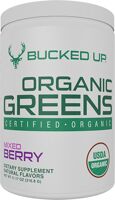
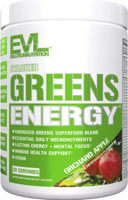
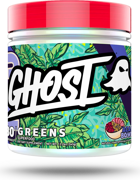

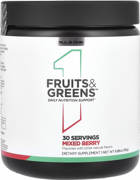


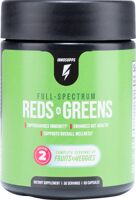
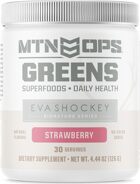
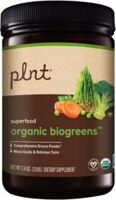
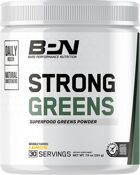
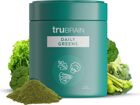
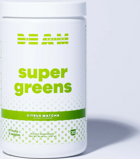
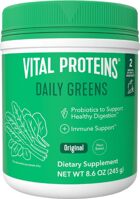


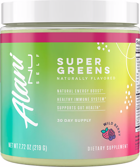
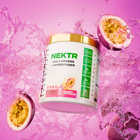
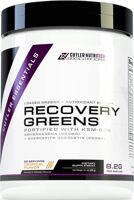





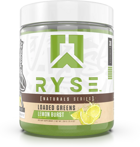
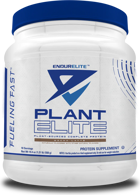
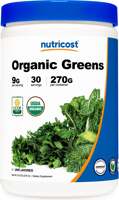
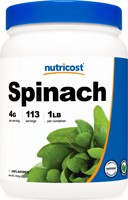
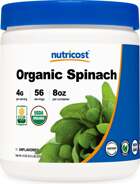


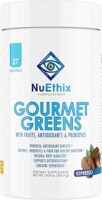
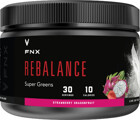
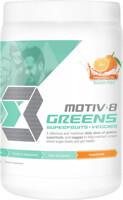

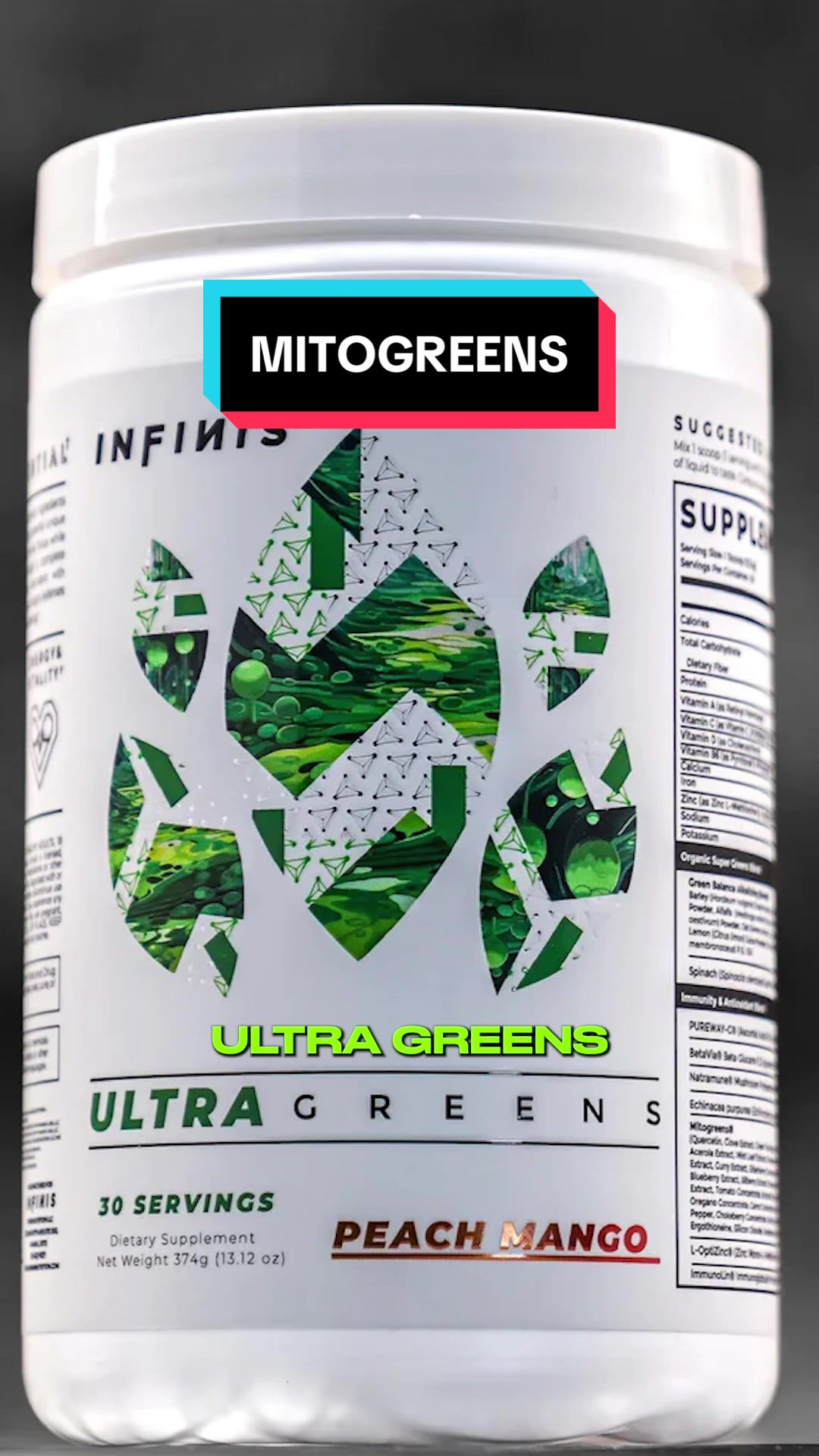
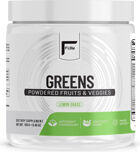








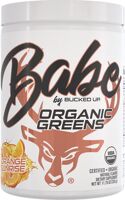

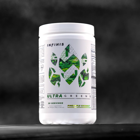

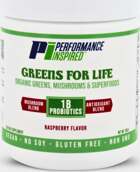

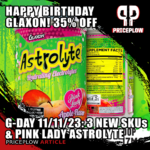
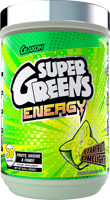




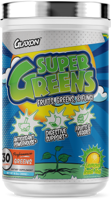
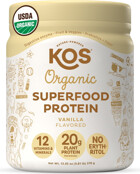

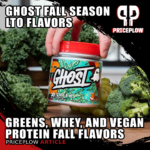

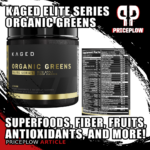

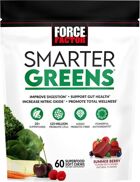

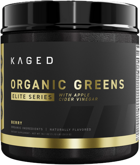



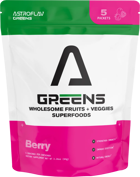

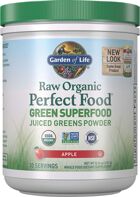


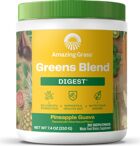
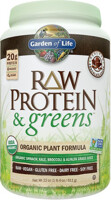
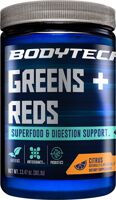





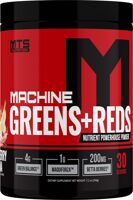
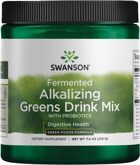
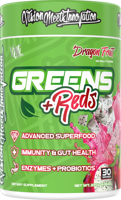


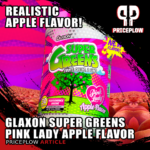

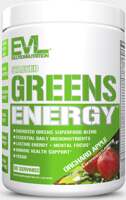
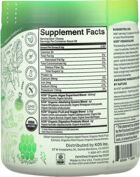

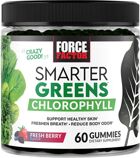

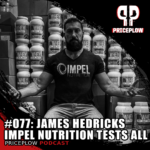

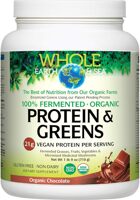
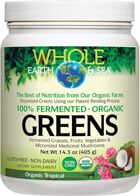

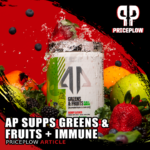
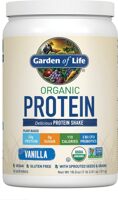
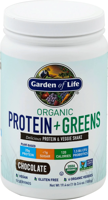

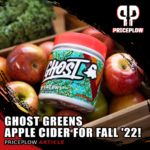

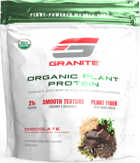
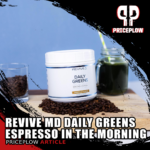
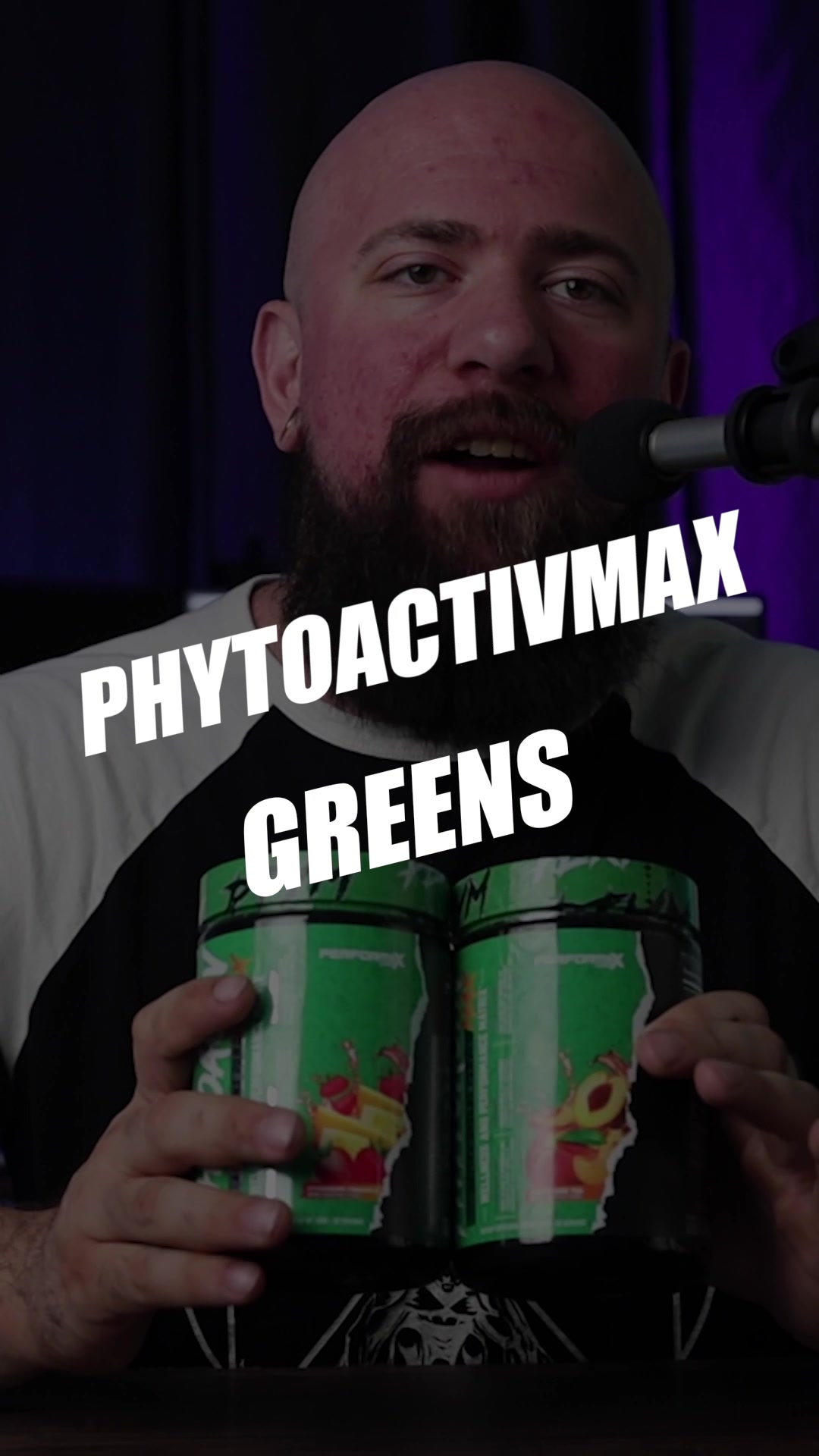


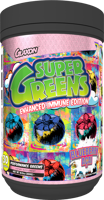
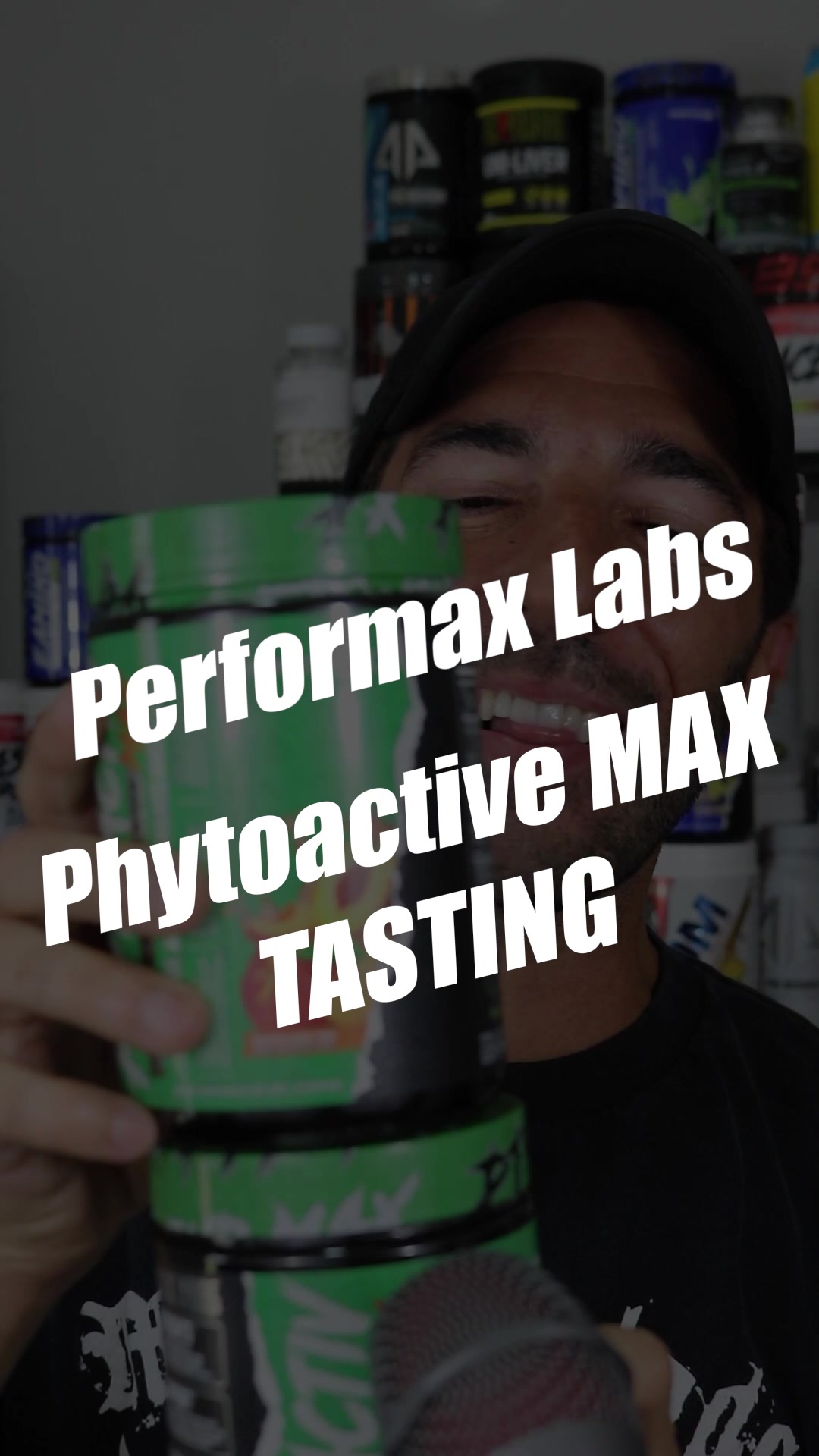
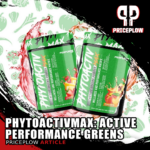
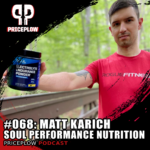

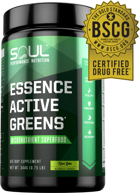
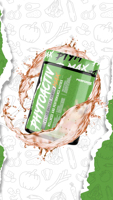
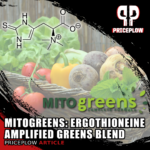


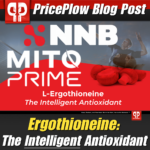
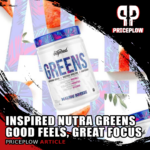
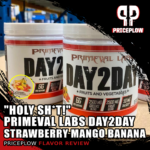






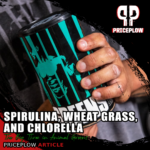




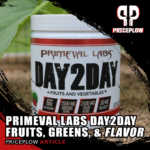





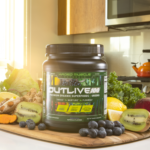

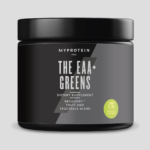
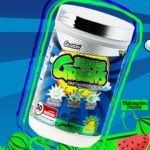
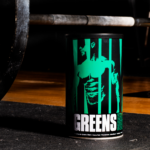




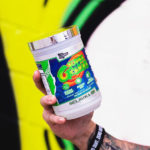

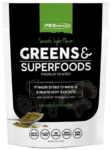


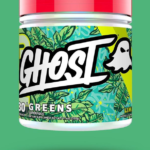


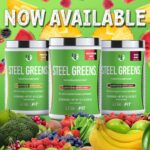


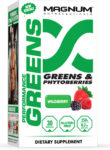







![Ghost 2023 Fall Flavors: Apple Cider [Doughnut] and Pumpkin Spice Cake Vegan!](https://img.youtube.com/vi/MqyuuCic1OA/sddefault.jpg)





































